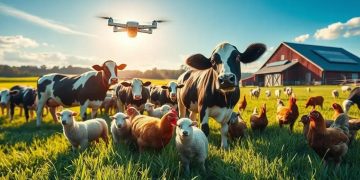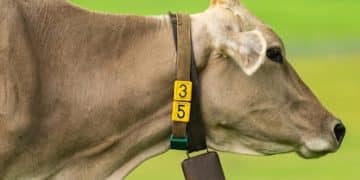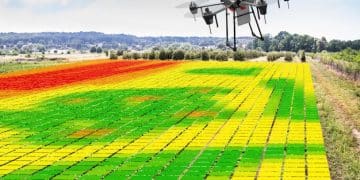Livestock Monitoring Technology: Boost Welfare, Cut Losses by 10%
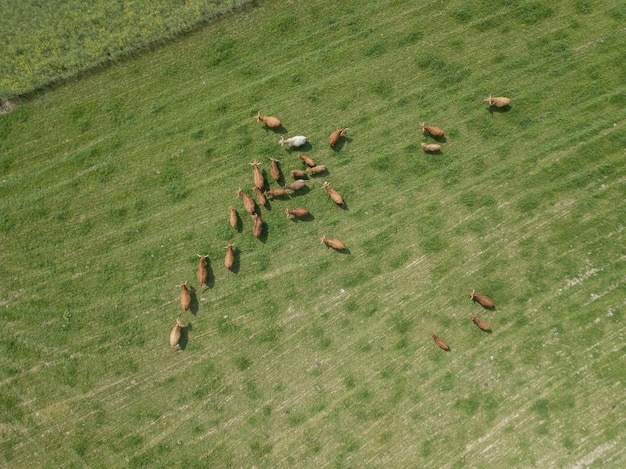
Livestock monitoring technology offers innovative solutions to enhance animal welfare and productivity by enabling real-time tracking of health metrics, behavior patterns, and environmental conditions, helping farmers minimize losses and optimize operations for sustainable livestock management.
The integration of technology into livestock management is revolutionizing the way farmers operate, offering unprecedented insights into animal health and behavior. By leveraging livestock monitoring technology: Improve animal welfare and reduce losses by 10% becomes a tangible goal, achievable through data-driven decisions and proactive interventions.
Understanding Livestock Monitoring Technology
Livestock monitoring technology encompasses a range of tools and systems designed to track and analyze various aspects of livestock health, behavior, and environment. These technologies aim to provide farmers with real-time data that can be used to improve animal welfare, increase productivity, and reduce operational costs.
From wearable sensors to sophisticated data analytics platforms, livestock monitoring technology is transforming traditional farming practices into more efficient and sustainable operations.
Key Components of Livestock Monitoring Systems
Livestock monitoring systems typically consist of several integrated components that work together to collect, transmit, and analyze data. These components include sensors, communication networks, data processing platforms, and user interfaces.
- Wearable Sensors: Devices attached to animals to monitor vital signs, activity levels, and location. These sensors can track parameters such as heart rate, body temperature, movement patterns, and GPS coordinates.
- Environmental Sensors: Devices placed in barns or pastures to monitor environmental conditions such as temperature, humidity, air quality, and light levels.
- Communication Networks: Technologies such as cellular networks, LoRaWAN, and satellite communication used to transmit data from sensors to central processing platforms.
- Data Analytics Platforms: Software systems that process and analyze data from sensors, providing farmers with insights and actionable recommendations.
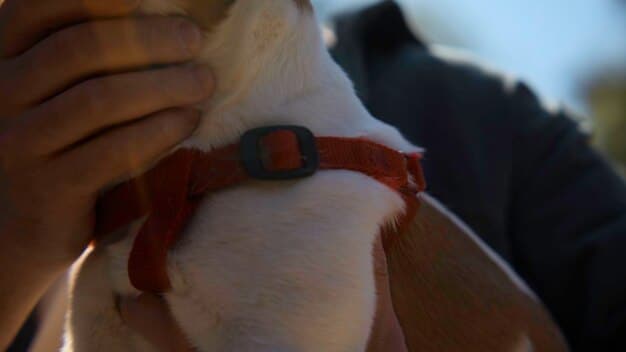
These components form a comprehensive system that enables farmers to make informed decisions based on real-time data, leading to improved animal welfare and operational efficiency.
In conclusion, understanding the key components of livestock monitoring systems is essential for leveraging the full potential of these technologies and achieving the goal of improving animal welfare and reducing losses.
Benefits of Implementing Livestock Monitoring Technology
The implementation of livestock monitoring technology offers many benefits for farmers, animals, and the environment. By providing real-time data and actionable insights, these technologies empower farmers to optimize their operations and achieve sustainable livestock management.
From improved animal health and welfare to increased productivity and reduced environmental impact, livestock monitoring technology is transforming the future of farming.
Improved Animal Health and Welfare
One of the primary benefits of livestock monitoring technology is the ability to improve animal health and welfare. By continuously tracking vital signs, behavior patterns, and environmental conditions, farmers can detect early signs of illness, injury, or stress.
This early detection allows for prompt intervention, reducing the severity and duration of health issues, and improving overall animal well-being. For example, sensors can detect changes in an animal’s activity level or body temperature, indicating the onset of an infection or lameness. Farmers can then isolate and treat the affected animal before the condition worsens or spreads to other animals.
Increased Productivity and Efficiency
Livestock monitoring technology can also lead to increased productivity and efficiency in farming operations. By optimizing feeding strategies, monitoring reproductive cycles, and tracking growth rates, farmers can improve the overall performance of their livestock.
- Optimized Feeding Strategies: Sensors can monitor an animal’s feeding behavior and nutrient intake, allowing farmers to adjust feed rations and ensure that each animal receives the right balance of nutrients.
- Monitored Reproductive Cycles: Tracking reproductive cycles can improve breeding efficiency and reduce the time between calving or lambing, leading to higher overall productivity.
- Tracked Growth Rates: Monitoring growth rates can help identify animals that are not performing optimally, allowing farmers to intervene and address any underlying issues.
These improvements can result in higher yields, reduced costs, and increased profitability for farmers.
In conclusion, the benefits of livestock monitoring technology extend beyond animal health and welfare, offering significant improvements in productivity, efficiency, and sustainability for farming operations.
Specific Applications of Livestock Monitoring Technology
Livestock monitoring technology has a wide range of specific applications that can address various challenges and opportunities in livestock management. These applications span different types of livestock, including cattle, sheep, pigs, and poultry, and can be tailored to meet the unique needs of each farming operation.
From precision feeding to disease detection, livestock monitoring technology is transforming the way farmers manage their animals and resources.
Cattle Monitoring Applications
In cattle farming, livestock monitoring technology can be used to track grazing patterns, monitor reproductive health, and detect early signs of lameness or mastitis. For example, GPS collars can track the location and movement of cattle in pasture, allowing farmers to optimize grazing management and prevent overgrazing.
Sensors can also monitor a cow’s body temperature and activity level, providing early warnings of potential health issues. This allows farmers to intervene quickly and prevent the spread of disease within the herd.
Sheep and Goat Monitoring Applications
In sheep and goat farming, livestock monitoring technology can be used to monitor lambing and kidding rates, track weight gain, and detect signs of predation. For example, accelerometers can monitor a sheep’s activity level, detecting unusual behavior that may indicate a predation event.
- Lambing and Kidding Rates: Monitoring lambing and kidding rates can improve breeding efficiency and reduce the time between births, leading to higher overall productivity.
- Weight Gain Tracking: Tracking weight gain can help identify animals that are not performing optimally, allowing farmers to intervene and address any underlying issues.
- Predation Detection: Detecting signs of predation can help farmers protect their flocks from predators such as coyotes and wolves.
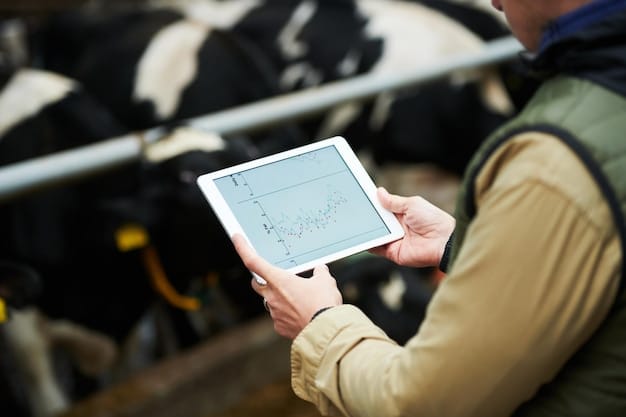
These applications can help farmers improve the health and productivity of their flocks, while also reducing the risk of losses due to predation or disease.
In conclusion, the specific applications of livestock monitoring technology are diverse and can be tailored to meet the unique needs of different types of livestock and farming operations.
Overcoming Challenges in Implementing Livestock Monitoring Technology
While livestock monitoring technology offers numerous benefits, there are also several challenges that farmers may face when implementing these systems. These challenges include the initial investment cost, the need for technical expertise, and concerns about data security and privacy.
However, by understanding these challenges and implementing appropriate strategies, farmers can successfully integrate livestock monitoring technology into their operations and reap the rewards.
Addressing the Initial Investment Cost
One of the primary barriers to adopting livestock monitoring technology is the initial investment cost. Sensors, communication networks, and data analytics platforms can be expensive, particularly for small-scale farmers. However, there are several strategies that can help reduce the financial burden.
- Government Subsidies and Grants: Many governments offer subsidies and grants to help farmers adopt new technologies.
- Leasing Options: Some vendors offer leasing options that allow farmers to spread the cost of the technology over time.
- Shared Infrastructure: Farmers can share infrastructure such as communication networks and data analytics platforms to reduce individual costs.
By exploring these options, farmers can make livestock monitoring technology more affordable and accessible.
Addressing the Need for Technical Expertise
Another challenge is the need for technical expertise to install, maintain, and operate livestock monitoring systems. Many farmers may not have the skills or knowledge required to effectively use these technologies. However, there are several ways to address this challenge.
Vendors often provide training and support to help farmers get started with their systems. Farmers can also seek assistance from agricultural extension agents or consultants who specialize in livestock monitoring technology.
In conclusion, by addressing the challenges of investment cost and technical expertise, farmers can successfully implement livestock monitoring technology and improve the health, welfare, and productivity of their animals.
The Future of Livestock Monitoring Technology
The future of livestock monitoring technology is bright, with ongoing advancements in sensor technology, data analytics, and communication networks. These advancements are paving the way for more sophisticated and integrated systems that can provide even greater benefits to farmers and animals.
From artificial intelligence to the Internet of Things, the future of livestock monitoring technology is full of potential.
Artificial Intelligence and Machine Learning
Artificial intelligence (AI) and machine learning (ML) are playing an increasingly important role in livestock monitoring technology. AI and ML algorithms can analyze vast amounts of data from sensors to identify patterns and predict future events.
For example, AI can be used to detect early signs of disease, predict optimal feeding strategies, and identify animals that are at risk of injury or stress.
The Internet of Things (IoT)
The Internet of Things (IoT) is also transforming livestock monitoring technology. IoT devices can communicate with each other and with central processing platforms, creating a seamless network of sensors, actuators, and data analytics tools.
- Remote Monitoring: IoT devices can be used to remotely monitor livestock in pasture, allowing farmers to track their location, health, and behavior from anywhere in the world.
- Automated Systems: IoT devices can be integrated with automated systems such as feeding and watering systems, allowing farmers to remotely manage their livestock.
- Data Analysis: IoT devices can collect and transmit vast amounts of data, which can be analyzed to identify trends and patterns that can improve livestock management.
These advancements will enable farmers to make more informed decisions, improve animal welfare, and increase productivity.
In conclusion, the future of livestock monitoring technology is characterized by ongoing innovation and integration, with AI, ML, and IoT playing key roles in driving progress.
Case Studies: Successful Implementation of Livestock Monitoring Technology
To illustrate the benefits of livestock monitoring technology, here are a few case studies of farms that have successfully implemented these systems and achieved significant improvements in animal welfare, productivity, and profitability.
These case studies demonstrate the real-world impact of livestock monitoring technology and provide valuable insights for farmers who are considering adopting these systems.
Case Study 1: Dairy Farm in Wisconsin
A dairy farm in Wisconsin implemented a livestock monitoring system that included wearable sensors on cows to track their activity levels, body temperature, and rumination rates. The system also included environmental sensors in the barn to monitor temperature, humidity, and air quality.
As a result of implementing the livestock monitoring system, the farm was able to detect early signs of mastitis and lameness in cows, reducing the severity and duration of these conditions. The farm also optimized feeding strategies based on the rumination rates of individual cows, leading to increased milk production. Overall, the farm saw a 15% increase in milk production and a 20% reduction in veterinary costs.
Case Study 2: Sheep Farm in Australia
A sheep farm in Australia implemented a livestock monitoring system that included GPS collars on sheep to track their location and movement in pasture. The system also included accelerometers to monitor the activity levels of sheep, detecting unusual behavior that may indicate a predation event.
As a result of implementing the livestock monitoring system, the farm was able to optimize grazing management and prevent overgrazing. The farm also detected several predation events, allowing farmers to intervene and protect their flocks from predators.
| Key Point | Brief Description |
|---|---|
| 🩺 Improved Animal Health | Real-time data enables early disease detection and proactive interventions. |
| 📈 Increased Efficiency | Optimized feeding and breeding lead to higher yields and reduced costs. |
| 🌱 Sustainable Practices | Data-driven decisions minimize environmental impact and optimize resource use. |
| 💰 Reduced Losses | Proactive monitoring minimizes disease outbreaks and predation risks, cutting losses by up to 10%. |
Frequently Asked Questions
▼
Livestock monitoring technology includes various tools and systems that track and analyze livestock health, behavior, and environmental conditions using sensors, communication networks, and data analytics platforms.
▼
It enhances animal welfare by detecting early signs of illness, injury, or stress through continuous monitoring of vital signs and behavior, enabling prompt intervention and reducing the severity of health issues.
▼
The key components include wearable sensors, environmental sensors, communication networks (like cellular or satellite), and data analytics platforms for processing and interpreting the collected information.
▼
Yes, by optimizing feeding strategies, monitoring reproductive cycles, and tracking growth rates, farmers can improve the overall performance of their livestock, leading to higher yields and reduced operational costs.
▼
Challenges include the initial investment cost, the need for technical expertise to manage the systems, and addressing concerns about data security and privacy to ensure responsible technology use.
Conclusion
In conclusion, livestock monitoring technology offers a transformative approach to modern farming, empowering farmers to significantly improve animal welfare and reduce losses by 10% through data-driven insights and proactive decision-making. By addressing implementation challenges and embracing technological advancements, the agricultural sector can harness the power of real-time monitoring to create more sustainable, efficient, and ethical livestock management practices.
